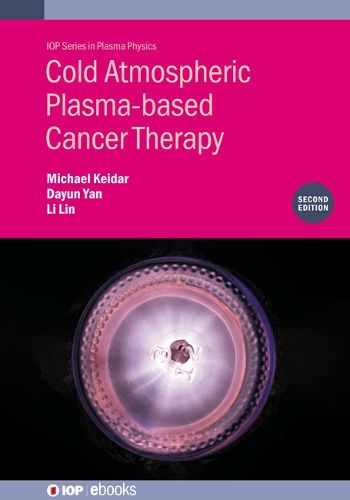Readings Newsletter
Become a Readings Member to make your shopping experience even easier.
Sign in or sign up for free!
You’re not far away from qualifying for FREE standard shipping within Australia
You’ve qualified for FREE standard shipping within Australia
The cart is loading…






This title is printed to order. This book may have been self-published. If so, we cannot guarantee the quality of the content. In the main most books will have gone through the editing process however some may not. We therefore suggest that you be aware of this before ordering this book. If in doubt check either the author or publisher’s details as we are unable to accept any returns unless they are faulty. Please contact us if you have any questions.
This book will provide a comprehensive introduction into fundamentals of the nonthermal plasmas and plasma devices used in plasma medicine. Several chapters will be devoted to analysis of the mechanisms of plasma interaction with cancer and normal cells including description of the mechanism of plasma selectivity. It will also present some recent advances in the field, the primary challenges and future directions. This book is meant for a broad audience, from students to engineers and scientists, who are interested in the emerging field of plasma medical application.
Plasma cancer therapy is fast developing field, and the new edition will be significantly expanded (from 98 pages to ~200 pages) and updated throughout, with the addition of the following new chapters:
* Non-thermal (cold) atmospheric plasma devices
* Diagnostics and modeling of cold atmospheric plasmas
* Mechanisms of cold plasma interaction with cancer cells
* Physics and technology of the adaptive plasma therapy
Key Features:
Provides an up-to-date description of the fast growing field of plasma-based cancer therapy.
Provides a comprehensive introduction into fundamentals of the non-thermal plasmas and plasma devices used in plasma medicine.
New edition is updated to include detailed description of non-invasive modality, new in vivo work and adaptive plasma written by experts in these areas.
Discusses the primary challenges and future directions of the field.
$9.00 standard shipping within Australia
FREE standard shipping within Australia for orders over $100.00
Express & International shipping calculated at checkout
This title is printed to order. This book may have been self-published. If so, we cannot guarantee the quality of the content. In the main most books will have gone through the editing process however some may not. We therefore suggest that you be aware of this before ordering this book. If in doubt check either the author or publisher’s details as we are unable to accept any returns unless they are faulty. Please contact us if you have any questions.
This book will provide a comprehensive introduction into fundamentals of the nonthermal plasmas and plasma devices used in plasma medicine. Several chapters will be devoted to analysis of the mechanisms of plasma interaction with cancer and normal cells including description of the mechanism of plasma selectivity. It will also present some recent advances in the field, the primary challenges and future directions. This book is meant for a broad audience, from students to engineers and scientists, who are interested in the emerging field of plasma medical application.
Plasma cancer therapy is fast developing field, and the new edition will be significantly expanded (from 98 pages to ~200 pages) and updated throughout, with the addition of the following new chapters:
* Non-thermal (cold) atmospheric plasma devices
* Diagnostics and modeling of cold atmospheric plasmas
* Mechanisms of cold plasma interaction with cancer cells
* Physics and technology of the adaptive plasma therapy
Key Features:
Provides an up-to-date description of the fast growing field of plasma-based cancer therapy.
Provides a comprehensive introduction into fundamentals of the non-thermal plasmas and plasma devices used in plasma medicine.
New edition is updated to include detailed description of non-invasive modality, new in vivo work and adaptive plasma written by experts in these areas.
Discusses the primary challenges and future directions of the field.